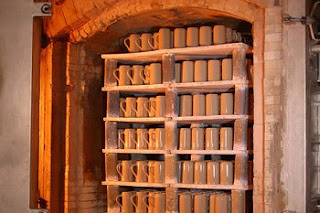What is Fasching, Fastnacht or Karneval?
Last week all of Germany celebrated their 5th season. That is what they call Carnival.
Fasching, Fastnacht or Karneval are the names for the cheerful colorful festival which is celebrated every year in the spring for several days, seven weeks before Easter.
Depending on the region's carnival time has many names and different customs. In North Rhine-Westphalia is called "Karneval". In Hessen, Rheinland-Pfalz and Baden-Württemberg, they celebrated it as Fastnacht, in Bavaria, Brandenburg and Thüringen it is called "Fasching".
Carnival is associated with the beginning of Lent before Easter. "Carne vale" is Latin and means "meat farewell".
During fasting, Catholic Christians should not eat meat or drink alcohol.
So it's obvious that people want to enjoy all that before Lent and believe me, they do and I did it too!
The dressing up, the cheerful exuberance and the many carnival celebrations turn the otherwise normal everyday life from Thursday to "Faschingsdienstag" (carnival Tuesday) up side down!
The "real" Carnival friends the fun begins already on 11/11 at 11:11 o'clock of each year.
In various costumes, with funny music and songs, children and adults enjoying a lively party in the streets, in schools, clubs and restaurants. On Ash Wednesday, the "fifth season" and the blast is over.
On "Rosenmontag" (Rose Monday) you will see parades going through every city or town in Germany. In Cologne, the Rosenmontagszug (parade) with a length of 6 to 7 km, attracts every year people from all the globe. At this length, it is not surprising that the parade goes on for about four hours.

The greeting for the "5th season" is "Helau" or "Alaaf", depending on the region.
 In the south and southwest of Germany Carnival has a very long tradition. Many of the old traditions date back to the time before Christ. In this period there were rituals in which the winter was suppose to be chased away with fire, creepy figures, clamps and rattles. This was very important for the people back then. Therefore, in the Bavarian Carnival, the "Schellenrühren" is still active. Clothed with large cowbells on his back, a wooden mask on the face, with a white dress shirt and the famous leather pants on, the "Schellenrührer" goes on and makes a lot of noise to chase away the winter. The Carnival celebrations in the city of Munich culminate on "Faschingsdienstag" with the dance of the market women on the Viktualienmarkt.
In the south and southwest of Germany Carnival has a very long tradition. Many of the old traditions date back to the time before Christ. In this period there were rituals in which the winter was suppose to be chased away with fire, creepy figures, clamps and rattles. This was very important for the people back then. Therefore, in the Bavarian Carnival, the "Schellenrühren" is still active. Clothed with large cowbells on his back, a wooden mask on the face, with a white dress shirt and the famous leather pants on, the "Schellenrührer" goes on and makes a lot of noise to chase away the winter. The Carnival celebrations in the city of Munich culminate on "Faschingsdienstag" with the dance of the market women on the Viktualienmarkt.




































